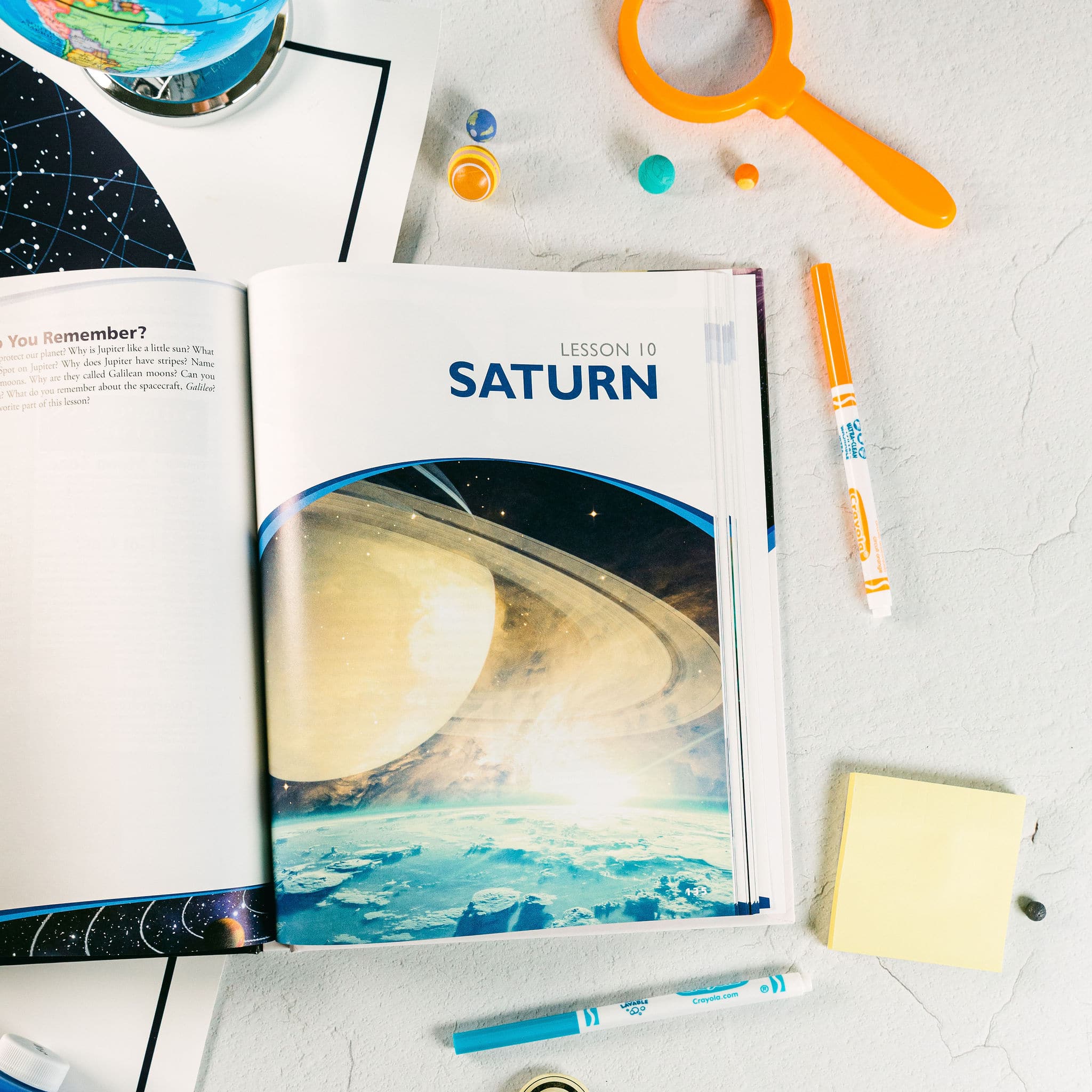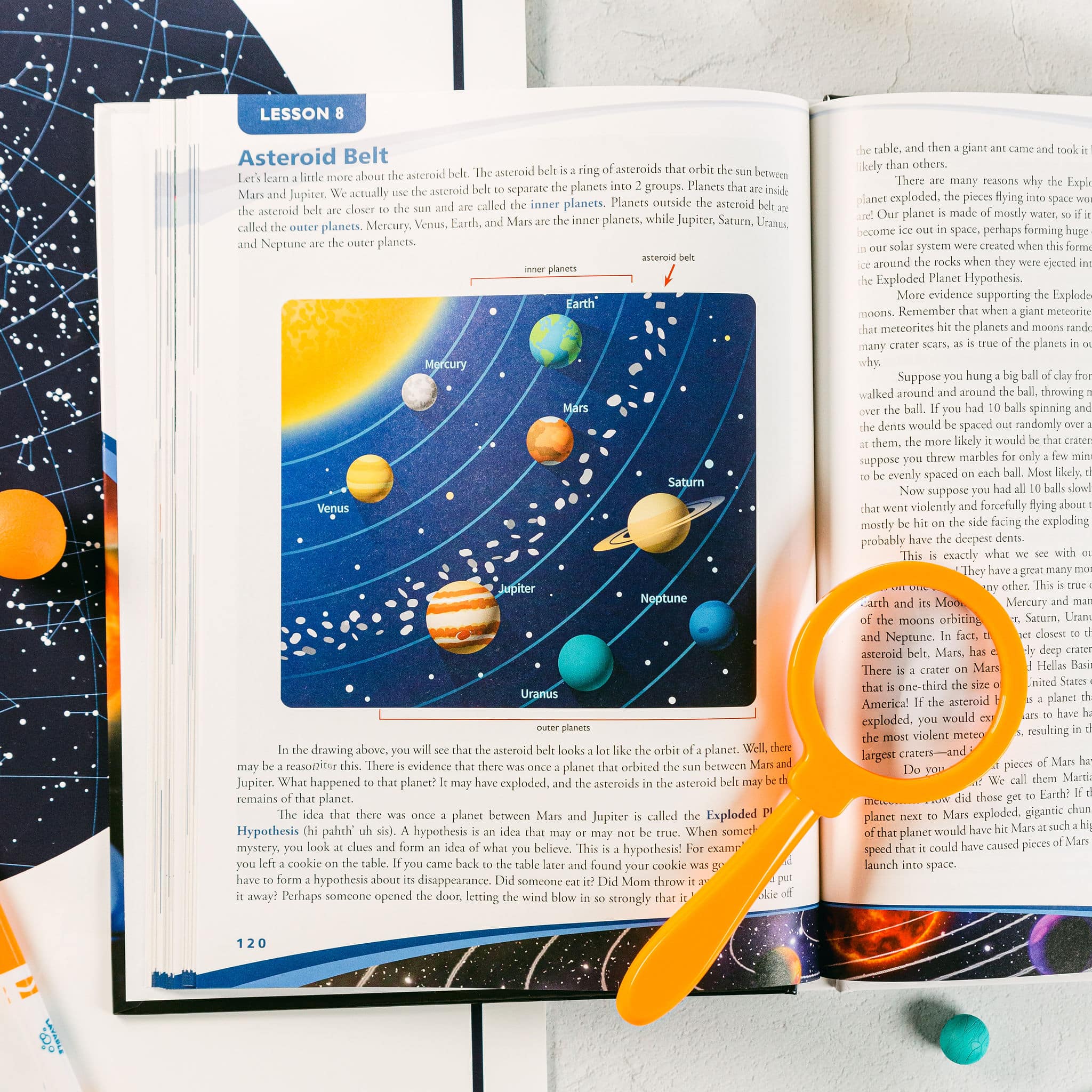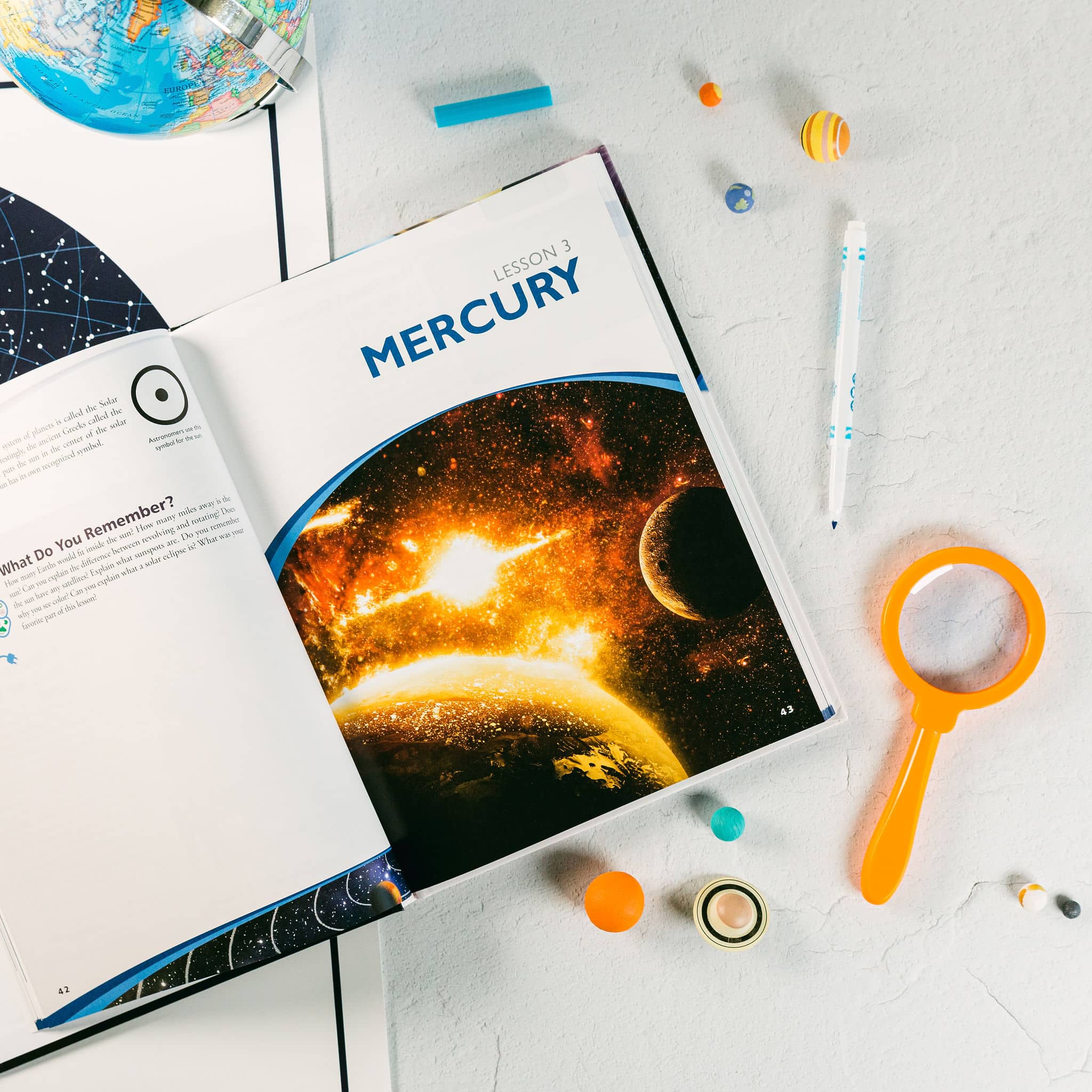Description
Apologia’s award-winning Astronomy curriculum is written for elementary students and has no prerequisites. Because young students learn best when they are interested in a topic, the Young Explorer Series was designed so that each course can be used in any order.
Using hands-on activities to help your young scientist retain what they learn, Apologia’s elementary science curriculum uses the Charlotte Mason methodology to introduce the wonders of our solar system, the stars, and beyond. With our Astronomy textbook, your student will explore and learn about the sun, planets, asteroid belt, dwarf planets, the Kuiper belt galaxies, nebulae, and even black holes as they reveal the marvel and might of our loving Creator.
Curriculum Overview
We believe that your child’s education is at its best when their learning begins with a spark of curiosity. Through practical concepts and things in their world students will learn and experience that science isn’t just a class–it’s a means for them to discover their world and its Creator!
Your young explorer will begin by learning about the sun, the planets in our solar system, the stars, galaxies, and space travel. Their awareness of the beauty of the universe and its Creator will expand as they expand their studies to the far reaches of what we can see out in space.
Topics Covered
There are 14 lessons in this elementary Astronomy curriculum.
This course covers the following 14 lessons:
- Lesson 1: What is Astronomy?
- Lesson 2: The Sun
- Lesson 3: Mercury
- Lesson 4: Venus
- Lesson 5: Earth
- Lesson 6: The Moon
- Lesson 7: Mars
- Lesson 8: Space Rocks
- Lesson 9: Jupiter
- Lesson 10: Saturn
- Lesson 11: Uranus
- Lesson 12: Neptune
- Lesson 13: The Kuiper Belt and Dwarf Planets
- Lesson 14: Stars, Galaxies, and Space Travel
Detailed lesson plans, as well as a suggested daily schedule, are included in the Notebooking Journal (sold separately).
Hands-on Learning with Experiments and Activities
Packed with vivid photos and graphics that bring Astronomy to life, the textbook provides engaging hands-on experiments and activities to help make learning stick.
Students will build a model solar system, make a solar eclipse, compass, and telescope, watch a meteor shower, launch a rocket, make clouds, and locate constellations. All of the activities and experiments use easy-to-obtain household items and truly make the lessons come alive!















